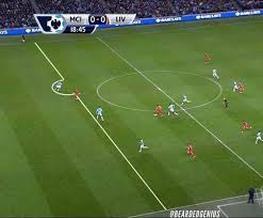 Sterling is wrongly flagged offside against City
Sterling is wrongly flagged offside against City Last year I raised a point regarding the costs of goal-line technology and asked whether the difference in the margin of error between a referee’s eyes and the Hawk-Eye system was really worth the reported price the Premier League paid for the equipment. Judgment error is quite rare in the case of critical goal line decisions but given the limitations of the human eye, perhaps fatigue or the viewing angle of the assistant, and sometimes due to the speed of the players in question, wrong calls relating to the offside rule are far more frequent.
Research on offside decisions made during the 2002 World Cup suggested that the error percentage for offside calls was 26.2% and that these decisions are more likely to occur earlier in a match. Further analyse suggested that this error rate dropped to 10% in the 2006 World Cup. A paper that reviewed decisions just in the English Premier League reported an error rate of 17.5% (868 out of 4960 observations).
A recent paper in the journal of Recent Advances in Computer Science and Information Engineering claims to have devised a technological solution that may potentially lower this error rate. The work suggests that the precise coordinates of all parties involved in an offside decision can be reconstructed through technologies such as computer vision and image processing. The researchers have produced and experimentally tested an algorithm which they believe can be used to assist as an electronic referee (as issues of 'who is interfering with play' will likely arise).
An interesting development but I think a long way to go for a technology that could (depending on its cost and accuracy) be of far greater practical value than Hawk-Eye.
 RSS Feed
RSS Feed